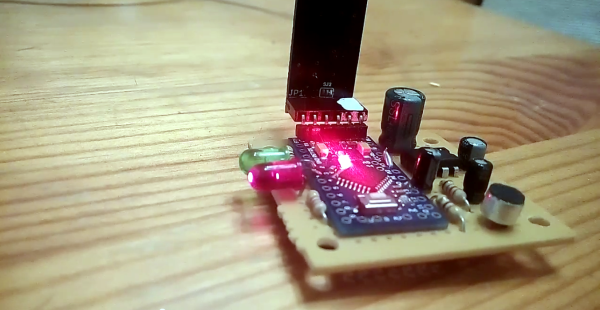A report released this week suggests that 50 flights into its five-flight schedule, the Mars helicopter might be starting to show its age. The report details a protracted communications outage Ingenuity’s flight controllers struggled with for six sols after flight 49 back in April. At first attributed to a “communications shadow” caused by the helicopter’s robotic buddy, Perseverance, moving behind a rocky outcrop and denying line of sight, things got a little dicey once the rover repositioned and there was still no joy. Since the helicopter has now graduated from “technology demonstration” to a full-fledged member of the team tasked with scouting locations for the rover while respecting the no-fly zone around it, it was essential to get it flying again. Several attempts to upload a flight plan failed with nothing but an acknowledgment signal from the helicopter, but a final attempt got the program uploaded and flight 50 was a complete if belated success. So that’s good, but the worrying news is that since Sol 685, the helicopter has been switching in and out of nighttime survival mode. What that portends is unclear, but no matter how amazing the engineering is, there’s only so much that can be asked on Ingenuity before something finally gives.
Decode5 Articles
Fun While It Lasted, Falcon 9 Telemetry Now Encrypted
A few weeks back we brought word that Reddit users [derekcz] and [Xerbot] had managed to receive the 2232.5 MHz telemetry downlink from a Falcon 9 upper stage and pull out some interesting plain-text strings. With further software fiddling, the vehicle’s video streams were decoded, resulting in some absolutely breathtaking shots of the rocket and its payload from low Earth orbit.
Unfortunately, it looks like those heady days are now over, as [derekcz] reports the downlink from the latest Falcon 9 mission was nothing but intelligible noise. Since the hardware and software haven’t changed on his side, the only logical conclusion is that SpaceX wasn’t too happy about radio amateurs listening in on their rocket and decided to employ some form of encryption.
Since this data has apparently been broadcast out in the clear for nearly a decade before anyone on the ground noticed, it’s easy to see this as an overreaction. After all, what’s the harm in a few geeks with hacked together antennas getting a peek at a stack of Starlink satellites? [derekcz] even mused that allowing hobbyists to capture these space views might earn the company some positive buzz, something Elon Musk never seems to get enough of.

On the other hand, we know that SpaceX is actively pursuing more lucrative national security launch contracts for both the Falcon 9 and Falcon Heavy. For these sensitive government payloads, the normal on-screen telemetry data and space views are omitted from the company’s official live streams. It seems likely the Pentagon would be very interested in finding out how civilians were able to obtain this information, and a guarantee from SpaceX that the link would be encrypted for all future flights could have helped smooth things over.
At the end of the post [derekcz] echos a sentiment we’ve been hearing from other amateur radio operators recently, which is that pretty soon space may be off-limits for us civilians. As older weather satellites begin to fail and get replaced with newer and inevitably more complex models, the days of picking up satellite images with an RTL-SDR and a few lines of Python are likely numbered.
Morse Decoder’s Lean And Sexy Search Algorithm
Often the Morse Code centered projects that we feature are to help you practice transmitting messages. This one takes a tack and builds an automatic decoder. We think [Nicola Cimmino’s] project is well worth featuring simply based on his explanation of the Digital Signal Processing used on the signal coming in from the microphone. Well done. But he’s really just getting warmed up.
What makes this really stand out is a brilliant algorithm that allows conversion from Morse to ASCII using a lookup table of only 64 bytes. This provides enough room for A-Z and 0-9 without chance of collision but could be expanded to allow for more characters. Below is a concise description of how the algorithm works but make sure you take the time to read [Nicola’s] project description in its entirety.
The algorithm can be decribed as follows. Have an index inside the lookup string inizialied to zero. Have an initial dash jump size of 64. At every received element (dot or dash) halve the initial dash jump and then increase by 1 the index inside the lookup string if a dot was received and by dash jump size if a dash was received. Repeat until a letter separator is reached, at that point the index inside the lookup string will point to the ASCII corresponding to the decoded morse.
Have you heard of this technique before? If so, tell us about it in the comments below. Before you jump all over this one, realize that Magic Morse uses a different technique.
Decoding News Helicopter Signals On YouTube
A serendipitous YouTube video recommendation led [Oona] to a raw copy of a news helicopter car chase video. While watching the video she noticed an odd sound playing from her left speaker. That was all it took to put [Oona] on the hunt. Decoding mystery signals is a bit of an obsession for her. We last saw [Oona] decoding radio signals for bus stop displays. She isolated the left audio channel and sent it through baudline software, which helped her determine it was a binary frequency shift keyed (BFSK) signal. A bit more work with SoX, and she had a 1200 baud bit stream.
Opening up the decoded file in a hex editor revealed the data. Packets were 47 bytes each. Most of the data packets was static. However, thee groups of bytes continuously changed. [Oona] decoded these numbers as latitude and longitude, and plotted the resulting data on Google Earth. Plotting her data against the position of the car in the video revealed a match. [Oona] had a complete track of the news helicopter as it followed the car. The telemetry data is in 7-bit Bell 202 ASCII, and is most likely part of an Interruptible Foldback (IFB) system used by the helicopter news crew and the studio producers. Click past the break for the YouTube video that started this all.
Continue reading “Decoding News Helicopter Signals On YouTube”
















